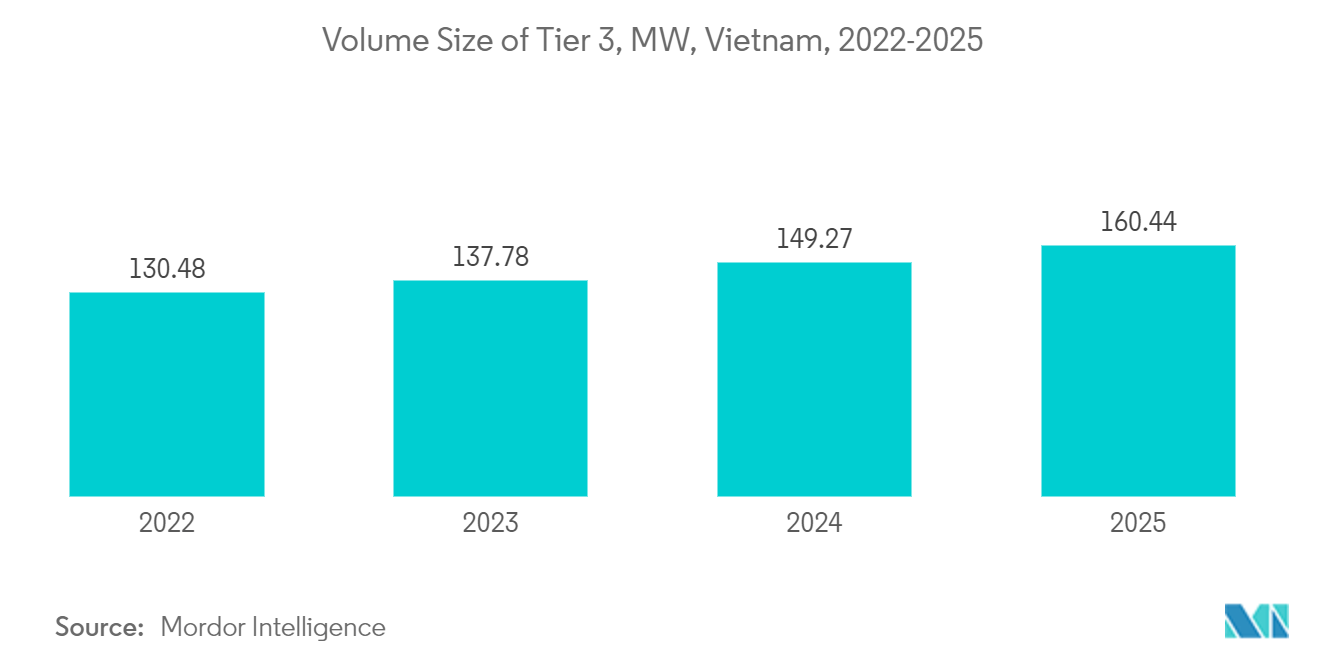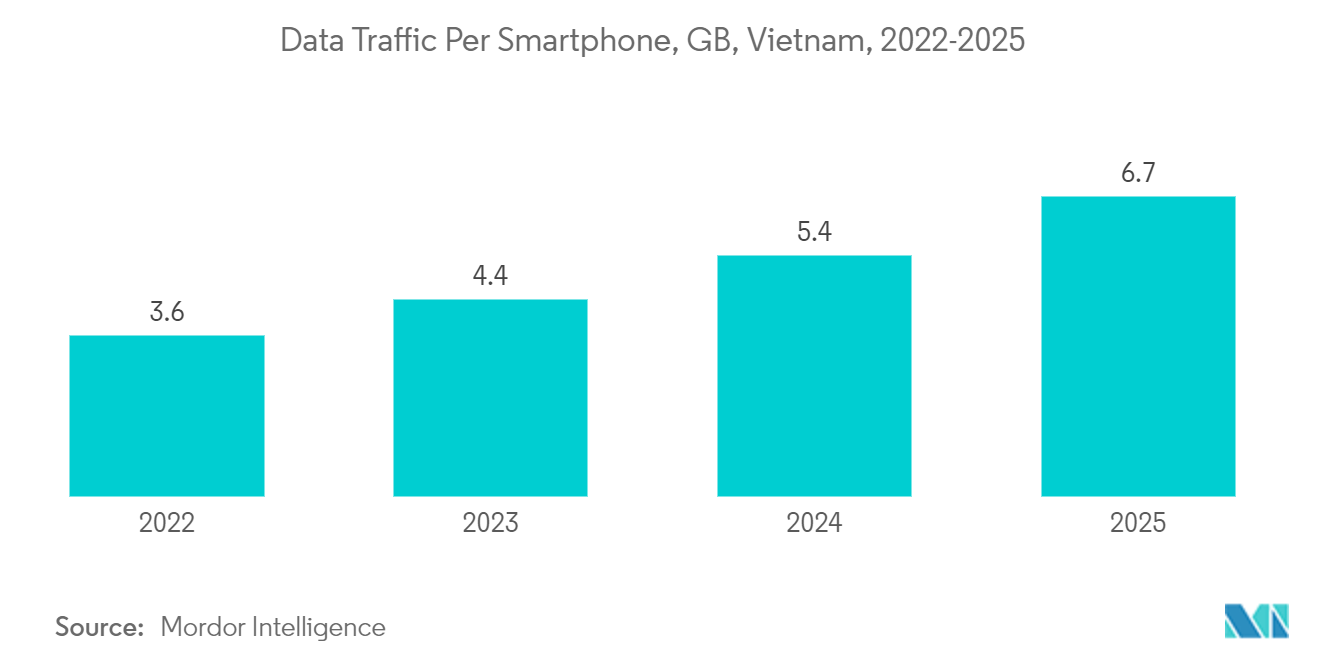Market Trends of Vietnam Data Center Construction Industry
The Tier 3 Segment Accounts for Maximum Market Share
- The growth in uninterrupted business services is causing Tier 1 and 2 facilities to lose demand. A growing number of global companies are creating business continuity services and shifting priority to Tier 3 data centers.
- Online entertainment, such as video and music streaming and games, was another activity gaining momentum among internet users across Vietnam. In rural areas, video and movie streaming has been one of the major daily online activities in recent years. YouTube was the most popular movie streaming platform. These services need data center facilities with minimum downtime and 24/7 support, which Tier 3 facilities can offer.
- The Vietnamese data center market is accessible to foreign investors, reflecting the nation's burgeoning digital economy. This has sparked a competitive surge in constructing cutting-edge data centers and IT infrastructure. Leading the charge is CMC Corporation, which is channeling a substantial USD 12.5 million investment into its new subsidiary, CMC AI Digital Infrastructure (CMC ADI). This arm is solely focused on developing and managing hyperscale Tier 3 data centers. Specifics of CMC's hyperscale data center initiative will be revealed at the company's 2024 Annual General Meeting in Hanoi.

The IT and Telecom Segment is Expected to Hold Significant Market Share
- Vietnam had 85% of adults using smartphones as of 2022. Vietnam aims to increase this proportion according to its draft National Digital Infrastructure Strategy by 2025. The Telecommunications Department of the Ministry of Information and Communications (MIC) notes that various digital initiatives are considered to push smartphone adoption in the country.
- In 2022, the launch of the 5G network and Viettel revolutionized the country's digital market. MIC has been assigned primary responsibility for accelerating the digital economy's development, as OpenGov Asia reported. The ministry is tasked with directing and assisting other ministries, agencies, and local governments in implementing the strategy. It provides the prime minister with reports on its achievements. Further, owing to an increase in the country's GDP, it is expected that from 2023 to 2030, wireless and broadband subscription rates will continue to rise across Vietnam, resulting in increased revenues for operators.
- Also, the digital economy and social development are top priorities in most development strategies. Local internet service providers (ISPs) in Vietnam plan to develop a cable network in response to frequent network breakdowns on the Asia America Gateway (AAG) submarine telecommunication cable. Thus, such infrastructure developments are driving the need for a data center in the country.
- The deployment of 5G networks may boost the region's digital economy and lead to higher demand for high-bandwidth networking infrastructure. For instance, in November 2021, Amazon Web Services (AWS) announced AWS outposts in Vietnam. Telecommunication services increased by 0.3% from 2020. The telecom segment has seen a drop in data prices since 2018, causing a double or triple growth in data traffic.
- In May 2022, Vietnam Posts and Telecommunications Group (VNPT), a leading provider of digital and telecommunications services in Vietnam, and Casa Systems, a leading provider of physical and cloud-native infrastructure technology solutions for mobile, cable, and fixed networks, signed an MoU to explore 5G capabilities and pave the way for next-generation network services in Vietnam. Such initiatives are expected to drive the telecom segment of the Vietnamese data center market in the coming years.


